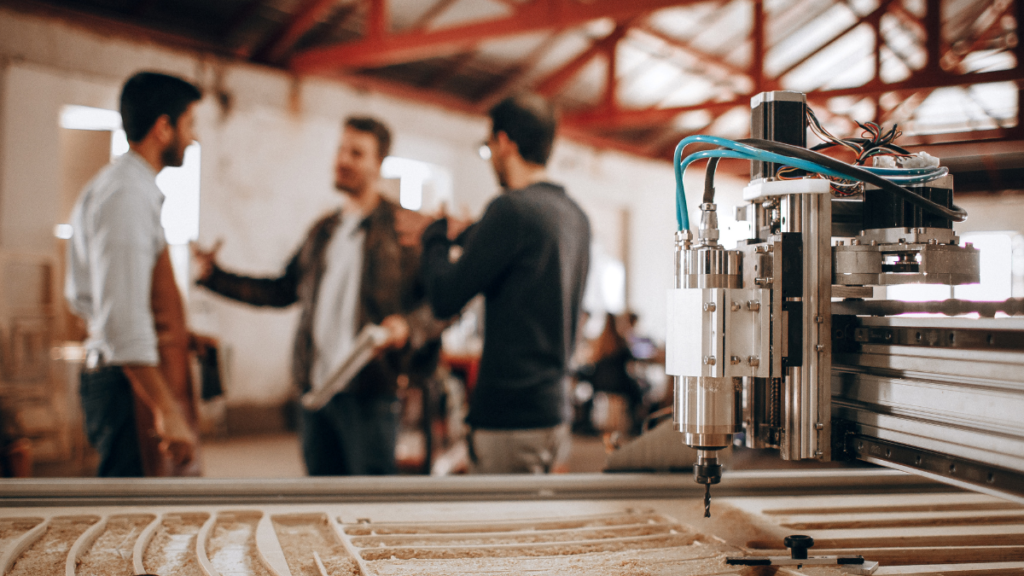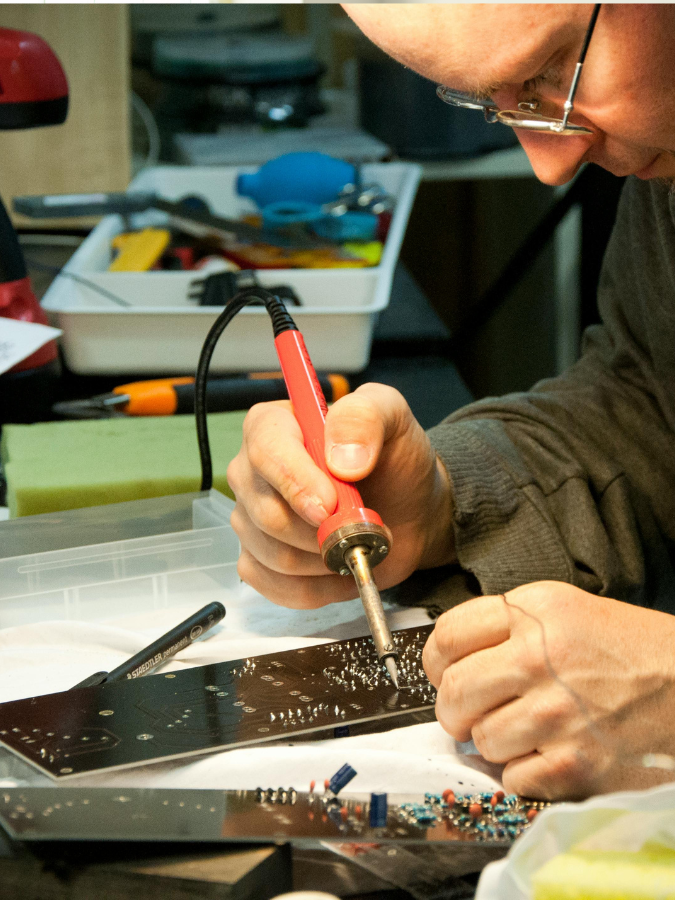Somewhere in the middle of a bustling factory, a technician sits in a quiet corner of the control room, sipping coffee while watching rows of digital readings flicker across the screen. There’s no shouting, no frantic radio calls, no rush to the production line. Yet, everything’s moving—machines are humming, conveyor belts are rolling, and output is right on schedule.
What’s changed?
A decade ago, that same technician would’ve been running back and forth with a clipboard, checking temperatures, inspecting belts, and guessing when a motor might fail next. Now, a handful of sensors—no bigger than a coin—are doing the watching for him. These tiny devices are tucked into equipment joints, hidden behind panels, wired into the lifeblood of the machines. They don’t draw attention. But they never sleep, and they never stop listening.
Smart manufacturing didn’t arrive with a bang. It crept in through the screws and bolts, through sensors so small they barely register to the naked eye. Yet these are the pieces turning the gears of a new kind of factory—one that’s faster, smarter, and a lot more intuitive.
Let’s talk about how something so small is quietly changing everything.
A quick rewind: When machines couldn’t talk
Before the factories got smarter, they ran on muscle memory. Not the machines—the people. The engineers knew the sound of a motor right before it stalled. The maintenance guy could smell overheating parts before a gauge ever turned red. It wasn’t data-driven. It was instinct-driven. And when something failed, it usually meant everything stopped.
Back then, inspections were manual. Someone had to walk the floor, clipboard in hand, logging readings and hoping they caught a problem early. If a pump vibrated oddly or a temperature reading looked off, it might be noticed. Or it might not. Most times, teams reacted only after things broke down. Repairs were rushed. Deadlines slipped. Costs piled up.
There was no whisper of warning. Machines didn’t send signals. They just failed—quietly, then catastrophically.
That was the reality: factories filled with powerful equipment and almost zero communication. The smartest person in the room wasn’t the system. It was the shift lead who’d been there twenty years.
And while experience still matters, something else has stepped in—not to replace that wisdom, but to give it backup.
The arrival of the tiny sensor
At first glance, it didn’t seem like much. A pebble-sized device, bolted onto the side of a motor. No blinking lights. No moving parts. Just a sensor—quiet, still, forgettable.
But the first time it sent a warning, everything changed.
The machine had been running hot for weeks. Not enough to trigger alarms, just enough to raise concern—if anyone had noticed. The sensor did. It flagged the rising temperature, logged the pattern, and pinged a quiet alert before things turned critical.
Instead of shutting down the line to fix a breakdown, the team scheduled a quick maintenance window. No delays. No scrambling for parts. Just a problem solved before it got loud.
That’s what these tiny sensors do best. They don’t announce themselves. They don’t ask for attention. They just sit inside motors, compressors, bearings—collecting real-time data and catching the drift from normal before it becomes damage.
In a place built on output and uptime, that kind of early whisper is gold.
Real-time awareness changes everything
One of the machines had started vibrating—just slightly. Nothing anyone would notice walking past. It wasn’t loud, and the output still looked fine. But the sensor caught it. The shift in rhythm was subtle, just a few data points off from normal. That ping made its way to the dashboard.
A technician opened the panel and found a bearing beginning to wear unevenly. Left alone, it would’ve burned out within a week, dragging the whole line down with it. Instead, they swapped the part during lunch break. No drama. No delay.
That’s the kind of awareness sensors bring—quiet, constant, and precise.
It’s not just about catching problems. It’s about finally seeing what’s happening inside the machines while they’re running. A spike in temperature. A pressure shift. An unusual hum. The sensor notices, reports, and keeps watching.
Every second, there’s a new piece of insight.
Suddenly, it’s not guesswork anymore. It’s clarity. And on the floor, clarity is what keeps everything moving.
From reactive to predictive: a mindset shift

There was a time when maintenance meant fixing what broke. The machines ran until something snapped, and only then did the real work begin. It was reactive. Exhausting. Expensive.
Now, there’s a different rhythm.
A factory manager in Ohio tells the story of a compressor that used to fail every six months. Each breakdown cost them three days of downtime and thousands in lost production. Then they added a few small sensors—tracking pressure, heat, and vibration. Within weeks, the patterns were clear. They didn’t just fix the next failure. They prevented it.
That’s the shift: moving from firefighting to foresight.
It’s not about staring at screens all day. It’s about knowing where to look before something goes wrong. The data doesn’t replace experience—it sharpens it. The seasoned technician still knows the heartbeat of the factory. Now, they’ve got a pulse monitor to back it up.
What used to be urgent is now scheduled. What used to be chaos is now routine. That’s not luck. That’s prediction. And it changes everything.
Tiny sensors, big patterns
It starts with a single sensor flagging a temperature spike.
Then another one logs a slight delay in the conveyor’s motor response. A third picks up increased vibration near the packaging station.
Individually, none of these signals scream trouble. But together? They tell a story.
A supervisor at a mid-sized plant in Michigan once noticed a dip in product quality that no one could quite explain. It wasn’t consistent. One day, everything was fine. The next, there were small defects—barely visible, but enough to raise flags.
The sensor data painted the picture. A subtle heat fluctuation in one part of the line caused the materials to cool unevenly. It didn’t trigger an alarm, but across dozens of units, it left a mark. Once the team adjusted that section’s timing and airflow, the problem disappeared.
That’s the power of pattern recognition. Sensors don’t just catch emergencies—they reveal the quiet trends that human eyes miss. Over time, those trends shape how entire lines are optimized, how products are perfected, and how costs are quietly cut without layoffs or major overhauls.
The machines are talking. Now, the data is connecting the dots.
Not just for the big guys
Smart factories used to sound like something only global giants could afford. Rows of glowing dashboards. Six-figure automation budgets. Teams of analysts decoding the data.
But that’s not how it’s playing out.
A small metal shop outside Tulsa—barely 20 employees—installed a handful of low-cost sensors on their CNC machines. They didn’t overhaul the place. They didn’t bring in consultants. They just wanted to stop losing time to unplanned repairs.
Three months in, their downtime dropped by nearly 40%. One of the owners said he couldn’t believe how often they used to fly blind.
It’s not about building a tech empire. It’s about staying ahead without overspending. These sensors aren’t locked behind enterprise contracts or custom builds. They’re off-the-shelf. Affordable. Plug-and-play.
For smaller manufacturers, this isn’t just about keeping up. It’s about finally catching a break—competing smarter, reacting faster, and running lean without the constant risk of surprise failures.
The edge used to belong to scale. Now, it’s starting to belong to those who listen better.
Challenges no one talks about
It sounds seamless on paper—plug in a few sensors, let the data flow, and watch the factory run itself.
But the reality? It’s a bit messier.
One operations manager described the first few weeks of going “smart” as complete overload. The alerts came pouring in. Some were useful. Others felt like noise. Sorting signal from static became a job in itself.
And not everyone was onboard.
A technician with twenty years under his belt pushed back hard. He didn’t trust a device to tell him what he could feel in his bones. Said it made the job feel colder—like the machines were watching him now.
There’s also the question of what to do with all that data. Storing it is easy. Understanding it is another story. Without a clear plan, it piles up—gigabytes of numbers sitting in the cloud, unread and unused.
Then there’s the tech fatigue. Adding one sensor is simple. Adding fifty? That’s a system. And systems need upkeep, training, and time.
None of these are dealbreakers. But they’re real. The shift toward smart manufacturing doesn’t just challenge machines. It challenges habits, egos, and workflows that have been in place for decades.
Progress doesn’t always arrive with applause. Sometimes, it shows up as quiet resistance in the break room.
What’s next: The shift is only getting sharper
There’s no finish line here. The tech keeps getting smaller, faster, and easier to embed. What used to need a dedicated server now runs from a dashboard on a tablet. What once cost thousands is slipping under a few hundred bucks.
Some factories are starting to experiment with sensors that not only monitor but also make micro-adjustments in real time. Think of a machine that senses its own fatigue and fine-tunes its pace without being told. Not science fiction—just a quieter version of progress.
Then there’s the growing web of connection. Machines don’t just talk to humans now. They talk to each other. A shift in one part of the line triggers a change in another. It’s not about automation in the flashy, robotic sense. It’s about awareness—systems that respond because they’re finally paying attention.
The smart factory of tomorrow won’t necessarily look different. It won’t be louder or sleeker. It’ll just know more—and respond faster.
And that difference? It won’t be in the size of the machines, but in the precision of the sensors hiding inside them.
Small doesn’t mean insignificant
Back in that control room, the technician finishes the last sip of coffee as another alert quietly slides onto the screen. It’s nothing urgent—just a soft nudge about a pressure fluctuation in one of the pumps. A few clicks, a quick adjustment, and it’s handled.
No drama. No shutdown. Just a small course correction before things went sideways.
That’s what these sensors have done. They’ve shifted the rhythm of the factory from reactive to aware. From loud emergencies to quiet precision.
And the irony? The biggest shift in manufacturing today isn’t being led by new buildings or massive machines. It’s being driven by the tiniest pieces on the floor—silent, steady, and watching everything.
In an industry built on weight and motion, it’s the smallest things that are now keeping everything in motion.




